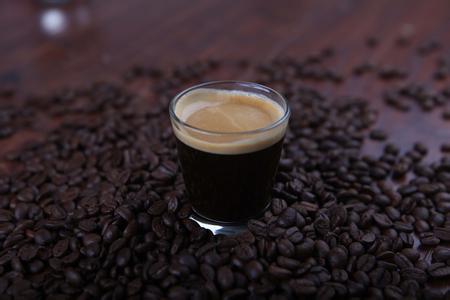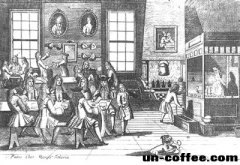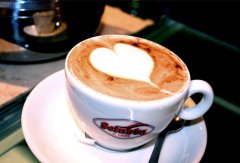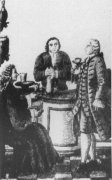the 17th century. Learn more about the 17th century.
-
The emergence of coffee demand in Europe began with the history and culture of coffee in the 17th century.

In the 17th century, there was a demand for coffee in Europe and began to import small quantities of roasted coffee beans from Yemen. In the 18th century, with the fragrance of European cafes and the sharp increase in coffee bean consumption, the Yemeni mocha alone was no longer enough. It is estimated that the output of coffee beans in Yemen in 2007 ○○ is about 20, 000 tons, which is stretched to meet the rising demand of Europe. The price of beans is high and the port of Mocha is busy.
2015-02-12 Europe emergence coffee demand began in the 17th century history and culture the 17th century. -
Demand for coffee in Europe began in the 17th century with charcoal coffee stoves

In the 17th century, demand for coffee emerged in Europe, and small quantities of roasted coffee beans began to be imported to Yemen. In the 18th century, coffee shops were everywhere in Europe, coffee consumption soared, and Yemeni mocha alone was no longer enough. It is estimated that Yemen's coffee bean production in 1970 was about 20,000 tons, which is already insufficient to meet the newly emerging European demand. Bean prices remain high,
2016-04-20 Europe Emergence Coffee Demand Beginning 17th Century Charcoal -
The emergence of coffee demand in Europe began in the 17th century

In the 17th century, there was a demand for coffee in Europe and began to import small quantities of roasted coffee beans from Yemen. In the 18th century, with the fragrance of European cafes and the sharp increase in coffee bean consumption, the Yemeni mocha alone was no longer enough. It is estimated that the output of coffee beans in Yemen in 2007 ○○ is about 20, 000 tons, which is stretched to meet the rising demand of Europe. The price of beans is high and the port of Mocha is busy.
2015-04-02 Europe the emergence of coffee demand began in the 17th century. -
Coffee culture the emergence of coffee demand in Europe began in the 17th century.

In the 17th century, there was a demand for coffee in Europe and began to import small quantities of roasted coffee beans from Yemen. In the 18th century, with the fragrance of European cafes and the sharp increase in coffee bean consumption, the Yemeni mocha alone was no longer enough. It is estimated that the output of coffee beans in Yemen in 2007 ○○ is about 20, 000 tons, which is stretched to meet the rising demand of Europe. The price of beans is high and the port of Mocha is busy.
2015-04-02 Coffee culture Europe emergence coffee demand began in the 17th century. -
Coffee culture the emergence of coffee demand in Europe began in the 17th century.

In the 17th century, there was a demand for coffee in Europe and began to import small quantities of roasted coffee beans from Yemen. In the 18th century, with the fragrance of European cafes and the sharp increase in coffee bean consumption, the Yemeni mocha alone was no longer enough. It is estimated that the output of coffee beans in Yemen in 2007 ○○ is about 20, 000 tons, which is stretched to meet the rising demand of Europe. The price of beans is high and the port of Mocha is busy.
2015-04-03 Coffee culture Europe emergence coffee demand began in the 17th century. -
Indian-style Malabar coffee has been favored by Europeans since the 17th century.

Professional coffee knowledge exchange more coffee bean information Please follow the coffee workshop (official Wechat account cafe_style) refined wind-stained coffee on rainy days ~ we'll talk about it later. Coffee became the number one drink in the world only 1600 years later, so the recorded history of coffee is only 400 years similar to that of Taiwan. Most people recognize that Africa is the origin of coffee.
2019-03-19 India Wind stains Mara Barr Coffee since the 17th century has been received Europe -
Coffee common sense coffee aroma in Paris, France in the 17th century

I've been going to many cafes in recent years, and I'm getting bored. I often daydream about the old cafes, the old beauties that can only be read in books but cannot be experienced in person. For example, when it comes to cafes in Paris today, people's first impression is the relaxed and enjoyable atmosphere of relaxed seats in the shade of trees or in the Arbor. But in the past, Parisians drank coffee, which was not like this at all. Straight
2015-06-12 Coffee common sense 17th century France Paris in recent years cafes more and more gradually -
The relationship between baking mode and region

In the past, the depth of baking used in different places was very different, which was very similar to the taste preference of modern regional people. For example, in most parts of Europe in the 16th and 17th centuries, they drank very deep-roasted Turkish-style coffee. For example, in a 17th century homemade baking advice booklet, it was described as follows: take any amount of coffee you like.
2014-08-15 Coffee knowledge roasting mode coffee roasting regional differences -
Coffee goes through all over the world

From the 17th century to the early 18th century, the habit of drinking coffee spread from Europe, from the west to the whole of Europe, and eastward to India and present-day Indonesia. As for coffee as a growing crop, the Islamists brought the seeds from Yemen to India, and then Europe introduced the seeds to Ceylon and Java. Bring seeds from Java to Amsterdam
2014-08-15 Coffee knowledge coffee development process global coffee development -
The distinguishing characteristics of six major teas: how to distinguish the grades of black tea in the 17th century?
In Chinese tea culture, tea is divided into six categories, that is, six major tea families. According to the different degree of fermentation, the color of the tea soup is also classified. In fact, it has been scientifically certified as the degree of oxidation of catechins. With the differences in the steps of the local knowledge process, the leaves of the same tea tree are changed into six different tastes. There are green and white respectively
2021-08-06 Six tea differences characteristics classification black tea grade how distinction 17th -
Coffee exports from El Salvador declined by 17.3%, about 132,000 government dollars less than the previous year.

The city of El Salvador has a large number of 16th-century buildings and religious buildings, many of which are decorated with 17th-and 18th-century carvings and stripes made of colored mud, reflecting the characteristics of the colonial period. Its overall characteristics are described through a forest of monuments and consistent ideas. All this shows that El Salvador is a city with a suitable structure for the colony.
2016-12-10 El Salvador coffee exports recession 17.3% last year decrease 1 -
The smell of coffee in Paris, France in the 17th century

I've been going to many cafes in recent years, and I'm getting bored. I often daydream about the old cafes, the old beauties that can only be read in books but cannot be experienced in person. For example, when it comes to cafes in Paris today, people's first impression is the relaxed and enjoyable atmosphere of relaxed seats in the shade of trees or in the Arbor. But in the past, Parisians drank coffee, which was not like this at all. Straight
2014-05-21 Coffee aroma in Paris France -
Law, Public opinion and Cafe

The engraving "English Cafe in the 17th Century". Dai Xue (Albert. V. Dicey), English jurist in the nineteenth century. His main works include an introduction to the study of the Constitution and lectures on the relationship between Law and Public opinion in Britain in the 19th Century. The Power of Public opinion by AV Dai Xue Edition: century Publishing Group Shanghai people's Publishing House January 2014 pricing: 39.00 yuan 17th
2014-07-23 Coffee shop coffee encyclopedia -
History of Coffee Culture on the Source of Coffee

The history of coffee can be traced back to the tenth century AD, but those are unverifiable history. For example, the widely spread story of shepherds, the story of monks across the desert and so on. What is really well documented is the spread time of coffee beans, that is, from Africa to Europe and the whole world, probably around the 16th-17th century AD, which is known to be a great voyage.
2014-09-05 -
Roasting coffee beans with technology-modified ruts

Although coffee drinking and growing methods developed dramatically in the seventeenth and eighteenth centuries, progress in roasting was very poor. The most common method of roasting at the time was to follow the Middle Eastern method of simple roasting: placing green coffee beans in an iron pan, then moving to a fire and roasting, stirring until the coffee beans were evenly mixed.
2015-04-13 technology improvement rutting roasting coffee beans though seventeenth eighteenth century coffee -
The history of Viennese drinking coffee can be traced back to the 17th century.

Coffee is something that Viennese enjoy talking about and are quite proud of. The Viennese even compare it with music and waltz, which is called the three treasures of Vienna, which shows the relationship between Viennese and coffee. Some people say that Vienna is a five-step coffee, which may be an exaggeration by the poet, but it is true that there are a large number of Vienna cafes. Coffee kiosks for people to drink standing up from street corners,
2015-10-15 Coffee history can be traced back to the 17th century coffee love to talk about -
A 17th century Caramel Macchiato-, a caramel macchiato with history.

Professional coffee knowledge exchange more coffee bean information please follow the coffee workshop (Wechat official account cafe_style) for many years Starbucks drank for nothing! It turns out that caramel macchiato should be drunk like this! A glass of Iced Green Tea Latte would like Grande to go. In the streets of Hong Kong, where there is a coffee shop, there are queues. Whether you are IFC Zhang Zhilin or a non-WTO college student
2018-03-21 Seventeenth century Caramel Macchiato- a cup history -
Turkish coffee shops promote the British democratic revolution

The medieval theory of divine kingship began to crumble in England in the seventeenth century, and after the Glorious Revolution the basis of government had shifted from kings as God's agents on earth to the hands of people bound together by social contracts. After experiencing this great historical turning point, it can be said that the creed of modern democratic society, that is, the will of heaven, was formed. Ren Min Tong
2014-07-30 From Turkey Its Cafe Push England Democratic Revolution Progress 17th century -
Coffee Culture Coffee and the Story of Arapai people

Coffee was the exclusive drink of Arabian people for more than 1000 years from the 7th century to the 17th century. Arabs brought the habit of drinking coffee to the countries they visited, from the Balkans to Spain to North Africa. After the decline of the Roman Empire, the center of world development gradually shifted to the Islamic world. Slowly, the word coffee entered the languages of countries all over the world in different forms.
2014-10-13 Coffee Culture Coffee Story Coffee and Arabian Story -
World Coffee-2

The first European description of coffee in 1573 was through German doctors staying in Syria. In the second half of the 16th century, the European people who traveled on the east coast of the land gradually spread. The British East India Company was established in 1660 and the East India Company was established in the Netherlands in 1602. The East India Company refers to the trade between Asia and Europe, South Asia and the East in the 17th and 19th centuries.
2014-08-07 Coffee knowledge World Coffee Coffee Encyclopedia
